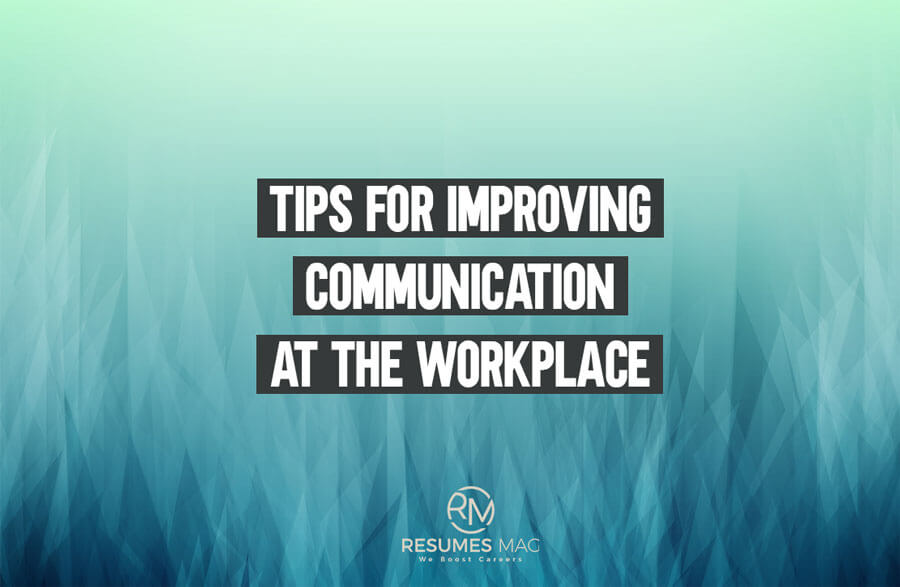Communication is the driving force of most workplaces. Employees and their managers need to collaborate regularly through in-person interactions, emails, phone calls, meetings, and conferences. That way, it ensures that employees and managers are both on the same page about the company’s objectives and how specific tasks need to get done.
A lack of communication causes confusion and anxiety in the workplace. A manager may be guilty of not communicating with their employees if they’re too busy or distracted. For this reason, you must develop a plan to strengthen communication in the workplace so that misunderstandings and mistakes can be avoided.
Below are ten brilliant tips for improving communication at the workplace.
1) Newsletters
Weekly newsletters are a great way to update all of your employees about any changes or news concerning the workplace. You can simply email the newsletter or send an SMS message to all your employees at the same time. They will receive the newsletter on their computers or mobile devices, depending on how your organization operates. Then you don’t have to go to each employee and update them in-person.
2) Surveys
Some employees may feel like they don’t have a voice in the workplace. Either that or they’ll feel too embarrassed to recommend specific changes to their boss.
One effective way around this issue is to allow employees to fill out surveys and submit them anonymously. These surveys can ask questions about the workplace and what changes the employees would like to see made to it. When the employees are done filling out the survey, they can drop the anonymous survey sheet into a dropbox on the wall.
3) Weekly Group Meetings
When there are dozens of employees in the same workplace, it is time-consuming for managers to conduct individual meetings with each employee on a weekly basis. A much more effective way to communicate with employees and save time is by holding weekly group meetings.
At a group meeting, the manager talks to all of their employees at the same time. The manager can also answer questions and let everyone else hear the answers to those questions. This can take the pressure off managers because they won’t get asked the same question multiple times from various employees.
Read: A Guide to Becoming a CEO
4) Quarterly One-on-One Meetings
One-on-one meetings don’t need to be conducted all the time. However, it is important for a manager or supervisor to speak with each employee one-on-one at least every three months or so. This type of individualized meeting gives the manager a chance to update each employee on their work progress and what is good and bad about it. Improvements or suggestions can be recommended if necessary.
5) Mobile Application
Every company should have its own mobile application. Have all your employees download a company-based mobile application onto their smartphones. Design the application as a communication portal between management and employees.
Let the employees ask questions or communicate with their managers directly through the application. Managers should also use the application to update their employees about workplace news in real-time. Sometimes this can be more effective than a phone call because phone calls are often ignored.
6) Create Teams
Don’t let your employees feel alone in the workplace. It is better to encourage employees to work in teams because it’ll force them to collaborate with their colleagues. This helps eliminate confusion and social isolation, especially in office environments that have workers inside of cubicles.
Employees feel better when they work in teams. It helps them do their work better and more efficiently. There is also a psychological benefit in talking to other people at work instead of working alone for eight hours.
7) Social Media Interactions
Social media networks are not only for individuals anymore. Companies and businesses are using social media networks as a way to communicate with their employees on a more personal level.
Encourage communication amongst your employees on Facebook, Instagram, Twitter, and any other social media network. Let your employees share pictures and personal stories with each other. It is a great way to break the ice in the workplace and let everyone keep their guard down.
8) Constructive Feedback
Constructive feedback should be given to employees after they complete a particular project or task. The feedback should include the positives and negatives of the outcome of their work. Don’t make the feedback too judgmental. The manager should merely state facts and what they observed from the employee.
Constructive feedback is how employees can learn from mistakes and improve their performance and productivity in the workplace.
9) Friendships and Personalization
A lot of people don’t like to communicate unless they’re comfortable with their bosses and peers. That is why managers should not act too bossy or authoritarian. It is better if everyone feels friendly and comfortable with each other. Encourage personalized discussions so that employees won’t have any hesitation in talking to their peers or managers about problems they’re facing in their lives.
10) How-to Videos
Managers don’t need to waste their time training every single new employee that enters the workplace. It is better to let your employees watch how-to videos which will train them on how to do their jobs. They can even refer back to these videos whenever they forget how to do something. The managers won’t have to answer these questions again and again directly.
The how-to videos can be uploaded to YouTube, the mobile app, or the company website. Make it easy for employees to find video-based communication that explains a lot of what you want them to know.



0 thoughts on “10 Brilliant Tips for Improving Communication at the Workplace”